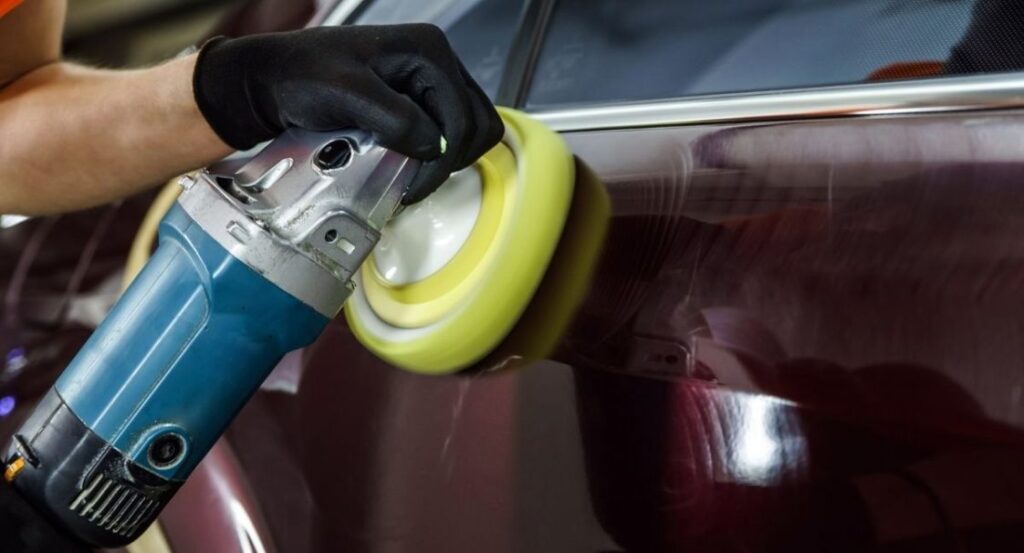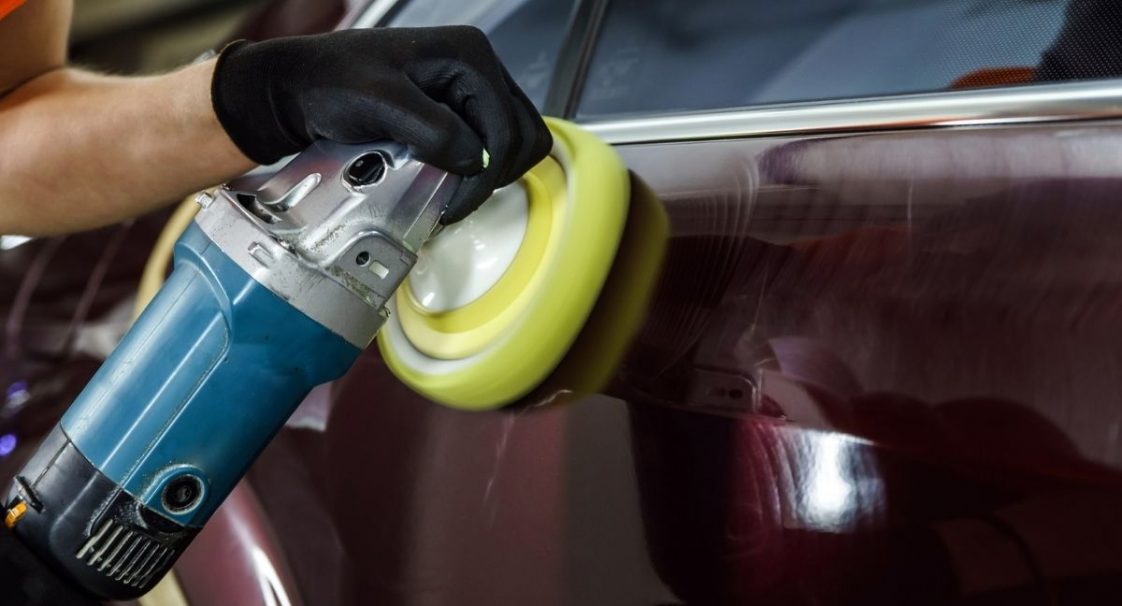
How to Buff Out a Scuff on Your Car: A Comprehensive Guide
Discovering a scuff on your car is never a pleasant experience. Whether it’s from a rogue shopping cart, a tight parking space, or even just a careless passerby, these unsightly marks can detract from your vehicle’s appearance and potentially lower its resale value. The good news is that you don’t always need to rush to a professional body shop. With the right tools, techniques, and a bit of patience, you can often buff out a scuff on your car yourself, saving both time and money. This comprehensive guide will walk you through the process step-by-step, ensuring you achieve a professional-looking result.
Understanding Car Scuffs
Before diving into the repair process, it’s crucial to understand the nature of car scuffs. Scuffs are typically superficial scratches that affect the clear coat and sometimes the paint layer of your car’s finish. They differ from deeper scratches that penetrate down to the metal. Identifying the type of scuff is essential for choosing the appropriate repair method. Here’s a breakdown:
- Clear Coat Scuffs: These are the most common and easiest to repair. They only affect the outermost clear coat layer.
- Paint Scuffs: These penetrate through the clear coat and into the paint layer. They may require more aggressive methods, but can still often be repaired at home.
- Deep Scratches: These go all the way down to the metal. While this guide may help reduce their appearance, they often require professional attention to prevent rust.
Essential Tools and Materials
Having the right tools and materials on hand is crucial for a successful scuff repair. Here’s a list of essentials:
- Car Wash Soap: To thoroughly clean the affected area.
- Microfiber Towels: Soft, lint-free towels for washing, drying, and polishing.
- Detailing Clay Bar: To remove embedded contaminants from the paint surface.
- Clay Lube: To lubricate the clay bar and prevent scratching.
- Rubbing Compound: An abrasive compound to remove the scuff marks.
- Polishing Compound: A less abrasive compound to refine the finish after using rubbing compound.
- Wax or Sealant: To protect the repaired area and enhance shine.
- Buffing Pad: Choose the appropriate pad for your buffer and the compound you’re using. Foam pads are generally recommended.
- Dual-Action Polisher (Optional): While you can buff out a scuff on your car by hand, a dual-action polisher will make the job faster and more effective.
- Spray Bottle: For applying water or clay lube.
- Masking Tape: To protect surrounding areas.
Step-by-Step Guide to Buffing Out a Scuff
Follow these steps to effectively buff out a scuff on your car:
Step 1: Wash and Dry the Area
Begin by thoroughly washing the area around the scuff with car wash soap and water. Rinse well and dry with a clean microfiber towel. This removes any dirt, grime, or debris that could scratch the paint during the repair process.
Step 2: Clay Bar Treatment
Spray the area with clay lube and gently rub the detailing clay bar over the surface. This will remove any embedded contaminants that washing alone couldn’t remove. Knead the clay bar occasionally to expose a clean surface. Wipe away any residue with a clean microfiber towel. [See also: Car Detailing for Beginners]
Step 3: Apply Rubbing Compound
Apply a small amount of rubbing compound to a clean buffing pad. If using a dual-action polisher, set it to a low speed and gently work the compound over the scuffed area using overlapping motions. Apply moderate pressure. If working by hand, apply the compound to a microfiber towel and rub the scuff in a circular motion with moderate pressure. Be careful not to apply too much pressure, as this could damage the paint. Focus on a small area at a time.
Step 4: Inspect and Repeat (If Necessary)
After a few passes, wipe away the rubbing compound with a clean microfiber towel. Inspect the scuff. If it’s still visible, repeat the process with the rubbing compound. For deeper scuffs, you may need to repeat this step several times. However, be cautious not to remove too much clear coat.
Step 5: Apply Polishing Compound
Once the scuff is significantly reduced or removed, switch to a polishing compound and a clean buffing pad. Polishing compound is less abrasive than rubbing compound and will help to refine the finish and remove any swirl marks left by the rubbing compound. Apply the polishing compound in the same manner as the rubbing compound, using overlapping motions and moderate pressure. [See also: Best Car Polishing Techniques]
Step 6: Wipe Away Residue and Inspect
Wipe away the polishing compound with a clean microfiber towel. Inspect the area to ensure the finish is smooth and glossy. If you see any swirl marks or imperfections, repeat the polishing step.
Step 7: Apply Wax or Sealant
To protect the repaired area and enhance the shine, apply a layer of wax or sealant. Follow the manufacturer’s instructions for application. This will help to prevent future scuffs and protect the paint from the elements. Apply the wax or sealant with a clean applicator pad and buff it off with a clean microfiber towel.
Tips for Success
- Work in a well-lit area: Proper lighting is essential for identifying scuffs and monitoring your progress.
- Use the right products: Choose high-quality rubbing and polishing compounds designed for automotive use.
- Don’t rush the process: Take your time and be patient. Rushing can lead to mistakes and potentially damage the paint.
- Test in an inconspicuous area: Before applying rubbing compound to the entire scuff, test it in a small, inconspicuous area to ensure it doesn’t damage the paint.
- Keep your buffing pad clean: Regularly clean your buffing pad to prevent it from becoming clogged with compound and debris.
- Consider professional help: If you’re not comfortable performing the repair yourself, or if the scuff is too deep, it’s best to seek professional help.
Preventing Future Scuffs
While knowing how to buff out a scuff on your car is valuable, preventing them in the first place is even better. Here are some tips to minimize the risk of future scuffs:
- Park carefully: Choose parking spots away from other cars and shopping carts.
- Be mindful of your surroundings: Watch out for low-hanging branches, bushes, and other potential hazards.
- Protect your car’s paint: Apply a high-quality wax or sealant regularly to protect the paint from scratches and scuffs.
- Consider paint protection film (PPF): PPF is a clear, adhesive film that can be applied to your car’s paint to protect it from scratches, chips, and scuffs.
- Wash your car regularly: Regular washing removes dirt and grime that can scratch the paint.
Conclusion
Knowing how to buff out a scuff on your car is a valuable skill for any car owner. By following the steps outlined in this guide, you can effectively remove minor scuffs and restore your car’s appearance. Remember to take your time, use the right tools and materials, and be cautious not to damage the paint. With a little patience and effort, you can save money and keep your car looking its best. While this guide provides a comprehensive overview of the process, always remember to consult with a professional if you’re unsure or dealing with deep scratches. Protecting your car’s finish is an ongoing process, so stay vigilant and proactive in preventing future scuffs. You can buff out a scuff on your car with confidence now!

